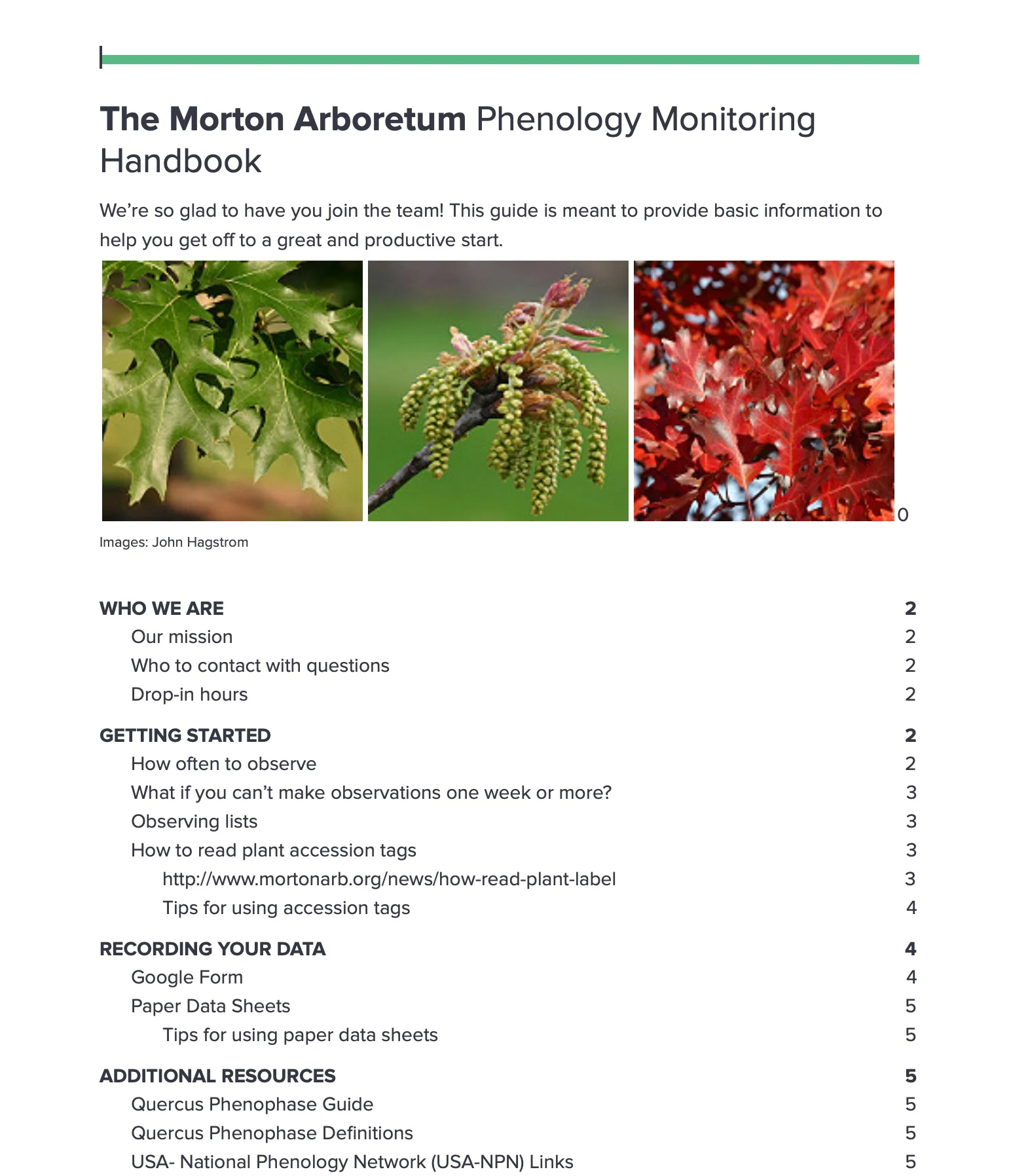Phenology Monitoring at The Morton Arboretum
The Forest Ecology lab at The Morton Arboretum seeks to understand the impacts of global change on trees and forests. The ultimate goal of the phenology monitoring program at The Morton Arboretum is to understand and predict how weather and climate variability impacts trees on the Arboretum’s grounds and in their natural habitats. To do this, we monitor the timing of leaf and flower development to understand what controls tree life cycles and how those controls vary across the tree of life. By partnering with the USA National Phenology Network, we are able to combine observations made by volunteers of trees here at the Arboretum with those made by other citizen scientists from across the country. We will use this information to not only study threats to trees in their natural habitat, but provide the latest observations and predictions of events such as spring bloom and fall color the the Arboretum’s visitors.
Data Entry — Updated March 2023!
Through a collaboration with Dr. Francisco Iacobelli and students at Northeastern Illinois University, we now have a custom web-based app for entering and managing observations collected as part of our phenology monitoring program at The Morton Arboretum. This replaces the Google Form used in the past. Select lists (Meadow Lake, Children’s Garden, Quercus macrocarpa will continue to use USA-NPN’s Nature’s Notebook for data entry.
Monitoring Lists
Need to know which trees to observe? Below are links to 2019 assignments and folders containing tree lists and maps by list. Find your name under “Volunteer Assignments” and then find your list of trees in the corresponding collection.
Online Phenology Status Portals
[UNDERGoing revisions] Updated daily
Want to know what phenology looks like in The Morton Arboretum’s Collections? Or how your observations compare to others’ or even last week? We have two options for viewing our data: as a list or as maps of collections. In both options you can select your collection, phenophases of interest, and species you wish to view. Thanks to youth volunteer Shiven Shah for putting these together. We welcome feedback and suggestions for what you would like to see or would find useful in the future!
Status March 2023: These are not current as we will need to update our data platforms. These should link to 2022 for an overview
Phenology Monitoring Volunteer Handbook
This document contains information and resources needed to help get volunteers started and keep going.
Observing Resources
Below are links to help with identifying tree phenophases correctly. The Acer and Quercus guides are genus-level phenophase guides that have not been approved by the USA National Phenology Network (USA-NPN). The characteristics of individual trees and species may differ from the images shown.
Below are also links to the National Phenology Network botany and phenophase primers. These are for all plants, but provide more in-depth descriptions of plant structures such as types of flowers and their parts.
Example of Acer spp. breaking leaf buds. Photo by Brendon Reidy.
Phenophase Photo Gallery
Phenology monitors now have the option to post photos of their observations to get to share photos of phenophases they are proud of and get help on difficult identifications. (Tutorial/Instructions)





